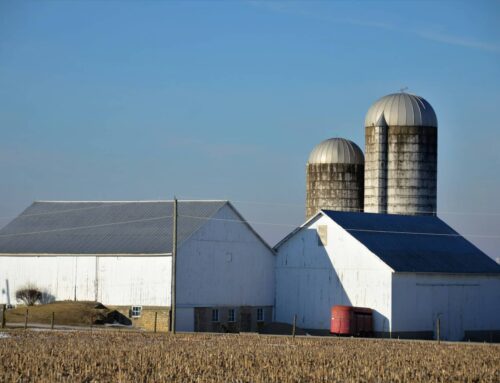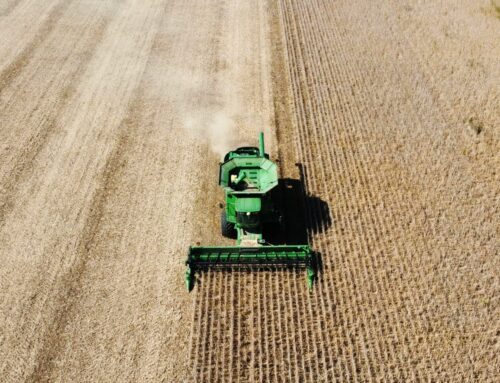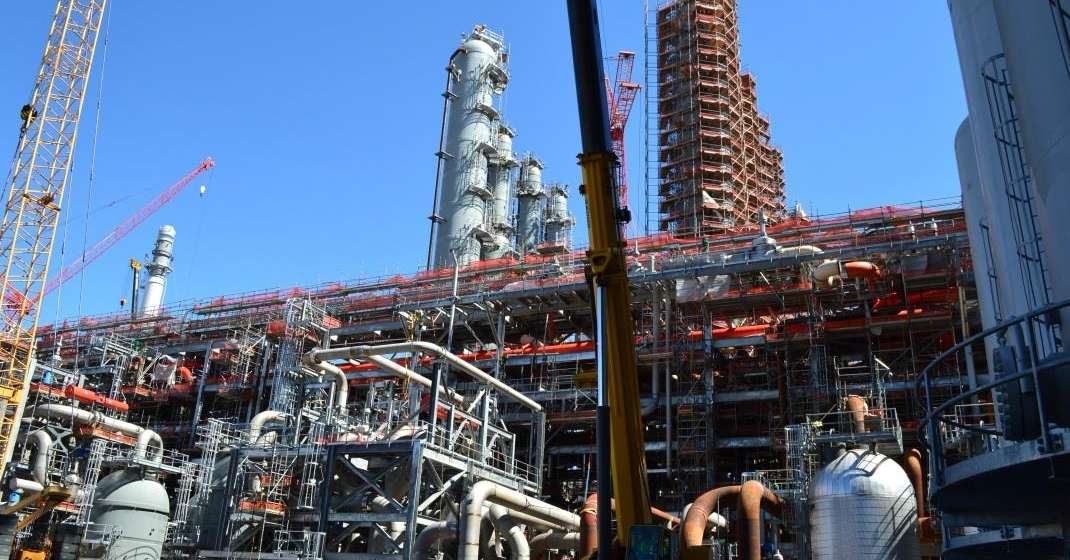Today, the U.S. Department of Agriculture’s (USDA) Economic Research Service projects that despite higher production costs, farm sector profits will actually increase in 2022 compared to 2021. Net farm income, USDA’s broad measure of profits, is pegged at $160.5 billion in 2022. Even after adjusting past years to account for 2022’s high inflation, this $160.5 billion would be a 7.2% increase from last year. It will put 2022 farm income 53.3% above the 20-year (2002-2021) average of $104.7 billion and be the highest one-year income in a half century (again, all years adjusted to today’s dollars).
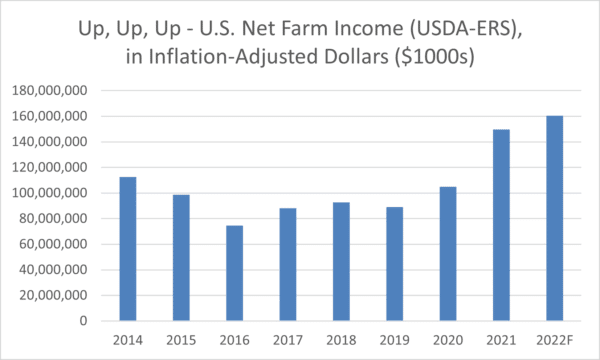
This increase in farm profits is all the more remarkable because the farm sector, like the rest of the economy, is seeing skyrocketing increases in costs. Overall production expenses for 2022 are expected to increase $69.9 billion (18.8%) compared to 2021. At the same time, direct government payments – subsidies paid directly to farm owners and operators – are projected to be $16.5 billion. This would be a “cut” of 36.3 percent compared to high subsidy levels in 2021 ($25.9 billion) due to an influx of COVID-19 and other ad hoc spending. Most of the $16.5 billion in government payments in 2022 (65 percent) is expected to be for supplemental and ad hoc disaster aid, totaling a record $10.7 billion.
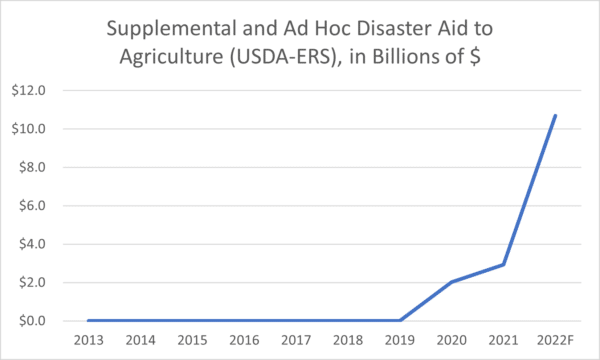
The reduction in government subsidies and the increase in production costs are more than outweighed by increases in market returns. Cash receipts from sales of crops and livestock are up $105.7 billion (24.3 percent) year-over-year with large increases in both crops (up 19 percent) and livestock and their products (up 30.8 percent). Some of the largest increases are accruing to growers of soybeans (29.5 percent), corn (27.6 percent), and wheat (23.7 percent) almost all due to higher-than-expected prices. Cotton receipts are expected to be up a paltry (sarcasm…) 10.3 percent while fruits and nuts come in at 3.6 percent. All animal sectors see projected increases, with some substantially. Milk receipts are up 38.1 percent, cattle 19.1 percent, turkey 19 percent, and broiler chickens a whopping 55 percent due to higher prices and cuts in supply due to recent disease affecting millions of birds. Even more shocking, though perhaps not for anyone who buys groceries, receipts for hogs are up “only” $1.5 billion (5 percent) and eggs receipts in 2022 are expected to increase 115 percent ($10 billion).
After adjusting past years for inflation, 2022’s $541.5 billion in net farm cash receipts would be the highest since USDA started keeping income records in 1929. Read that line again. Notably, while direct government income subsidies of $16.5 billion would be a reduction from last year, it is an increase from the $13 billion estimate released by USDA in September 2022. It’s important to note that commodity subsidies authorized in the farm bill – for crops like corn, wheat, cotton, peanuts, and soybeans – are expected to fall to just $354 million in 2022; these subsidies normally cost taxpayers several billion dollars each year. In addition to the $16.5 billion in government payments to agriculture, payouts from federally subsidized crop insurance (which aren’t counted in the $16.5 billion) are now expected to increase to more than $16.7 billion, the highest level since the widespread droughts of 2012-2013.
While economic headwinds affect nearly every sector of the economy, U.S. agriculture is on pace to achieve a level of net farm income unseen in 50 years. Lawmakers looking to reauthorize the federal farm bill in 2023 should pay attention to the numbers and not just the nagging from special interests looking to taxpayers to guarantee even higher levels of profits in the future.


